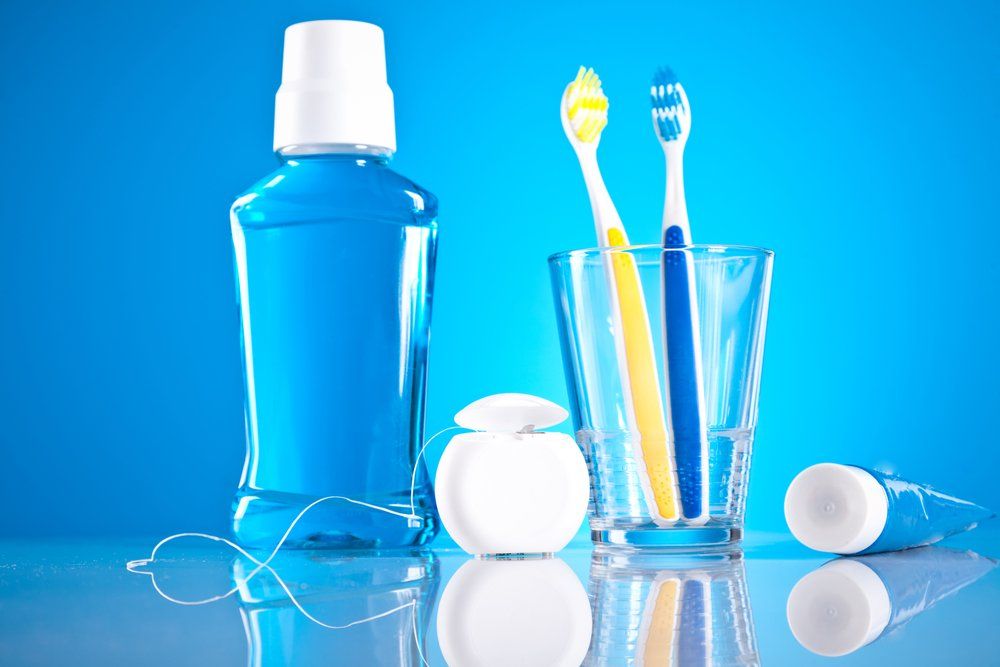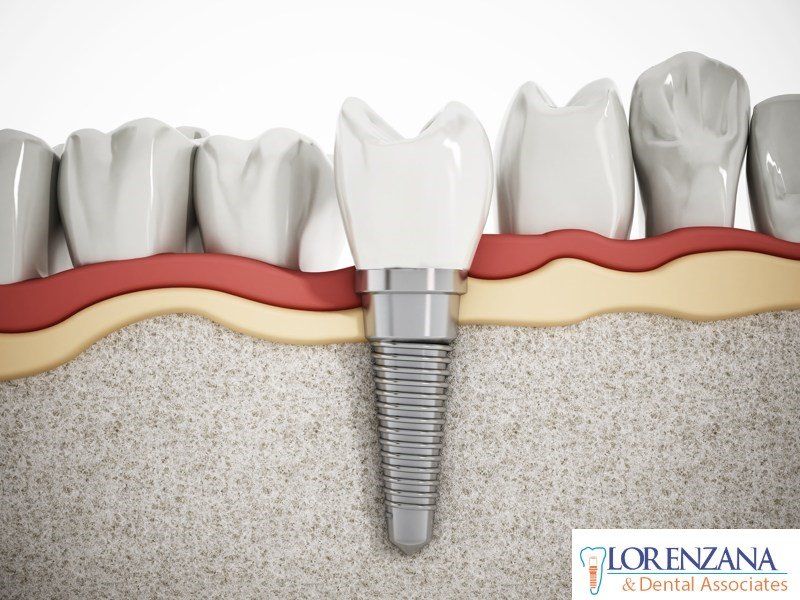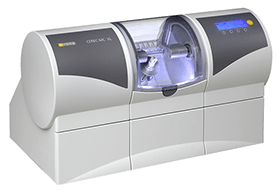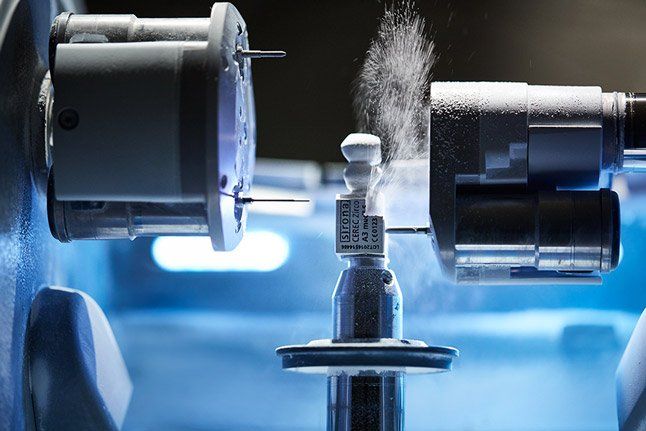Top 10 questions you should know about your dentist before getting dental implants.
Dr. Rafael Lorenzana • September 23, 2014
1. Does the doctor use surgical stents or guides?
Surgical stents provide communication between the surgeon and restoring dentist, so that the implant is placed at the ideal prosthetic position and angulation. The last problem you want to have is for the implant to be placed, then when you go to get the crown put on the position is incorrect...
2. Does your doctor use 3D X ray imaging and updated computer technology to ensure that the implant is being placed in the correct location with sufficient bone?
It is a luxury to have a doctor that utilizes 3D imaging to aid in implant placement. Cone Beam technology helps the clinician know exactly where to place the implant and if there is sufficient bone. It literally takes all guessing out of the equation.
3. How long has the doctor been placing dental implants?
4. How many implants has the doctor placed in their career?
Most patients would prefer to work with a clinician that is highly skilled with years of practice before having them place your dental implants. Make sure you ask them questions about training, experience, and numbers of implants.
5. What is the doctor’s 5 and 10 year success rates?
The success rate of dental implants is extremely high in most cases. However, doctors that do not save as much experience or use the latest technology can often have much lower success ratios for their patients. Please ask them for the success rate for 5 and 10 years post op.
6. When is the doctor planning on loading the implants and why?
Some doctors will load the implants the same day, some load them progressively, and some load them after 4-6 months... There are reasons for each of these and each can be appropriate depending on your situations. So ask your doctor when they are planning to load the implants and why.
7. How many surgeries will be required?
You should know ahead of time how man y surgeries this will require and in many cases it may be advantageous to get a second opinion.
8. Does the doctor utilize sedation?
IV conscious sedation or oral sedation can make the surgery much more comfortable for you. Ask if they have this service available.
Sometimes the doctor that places the implant will restore them as well. Ask if this is possible and if not ask who will be doing the restoration... The restoration is just as important as the placement of the implant in regards to long - term stability.
10. If your doctor is not restoring the implant, who is and what is their success rate?
Las 10 preguntas principales que debe saber sobre su dentista antes de obtener los implantes dentales.
1. ¿El médico usa endoprótesis quirúrgicas o guías?
Los stents quirúrgicos proporcionan comunicación entre el cirujano y el dentista restaurador, de modo que el implante se coloca en la posición y angulación protésicas ideales. El último problema que desea tener es que el implante se coloque, luego, cuando vaya a colocar la corona, la posición es incorrecta ...
2. ¿Su médico utiliza imágenes de rayos X 3D y tecnología informática actualizada para garantizar que el implante se coloque en la ubicación correcta con suficiente hueso?
Es un lujo contar con un médico que utilice imágenes 3D para ayudar en la colocación de implantes. La tecnología Cone Beam ayuda al médico a saber exactamente dónde colocar el implante y si hay suficiente hueso. Literalmente quita todas las conjeturas de la ecuación.
3. ¿Cuánto tiempo lleva el médico colocando implantes dentales?
4. ¿Cuántos implantes ha colocado el médico en su carrera?
La mayoría de los pacientes preferiría trabajar con un médico altamente capacitado con años de práctica antes de que coloquen sus implantes dentales. Asegúrese de hacerles preguntas sobre entrenamiento, experiencia y cantidad de implantes.
5. ¿Cuál es la tasa de éxito del médico a 5 y 10 años?
La tasa de éxito de los implantes dentales es extremadamente alta en la mayoría de los casos. Sin embargo, los médicos que no ahorran tanta experiencia ni usan la última tecnología a menudo pueden tener índices de éxito mucho más bajos para sus pacientes. Por favor, pregúnteles por la tasa de éxito de 5 y 10 años después de la operación.
6. ¿Cuándo planea el médico cargar los implantes y por qué?
Algunos médicos cargan los implantes el mismo día, algunos los cargan de forma progresiva y otros los cargan después de 4-6 meses ... Hay razones para cada uno de estos y cada uno puede ser apropiado dependiendo de su situación. Así que pregúntele a su médico cuándo planean cargar los implantes y por qué.
7. ¿Cuántas cirugías se requieren?
Debe saber con anticipación cuántas cirugías requerirá y, en muchos casos, puede ser ventajoso obtener una segunda opinión.
8. ¿El médico utiliza sedación?
La sedación consciente IV o la sedación oral pueden hacer que la cirugía sea mucho más cómoda para usted. Pregunte si tienen este servicio disponible.
9. ¿Están restaurando el implante?
A veces, el médico que coloca el implante también los restaurará. Pregunte si esto es posible y, si no, pregunte quién realizará la restauración ... La restauración es tan importante como la colocación del implante en lo que respecta a la estabilidad a largo plazo.
10. Si su médico no está restaurando el implante, ¿quién es y cuál es su tasa de éxito?
Si su médico coloca el implante pero no lo restaura, pregúnteles sobre la experiencia del médico que realiza la restauración. ¿Han asistido a algún curso avanzado?
Los stents quirúrgicos proporcionan comunicación entre el cirujano y el dentista restaurador, de modo que el implante se coloca en la posición y angulación protésicas ideales. El último problema que desea tener es que el implante se coloque, luego, cuando vaya a colocar la corona, la posición es incorrecta ...
2. ¿Su médico utiliza imágenes de rayos X 3D y tecnología informática actualizada para garantizar que el implante se coloque en la ubicación correcta con suficiente hueso?
Es un lujo contar con un médico que utilice imágenes 3D para ayudar en la colocación de implantes. La tecnología Cone Beam ayuda al médico a saber exactamente dónde colocar el implante y si hay suficiente hueso. Literalmente quita todas las conjeturas de la ecuación.
3. ¿Cuánto tiempo lleva el médico colocando implantes dentales?
4. ¿Cuántos implantes ha colocado el médico en su carrera?
La mayoría de los pacientes preferiría trabajar con un médico altamente capacitado con años de práctica antes de que coloquen sus implantes dentales. Asegúrese de hacerles preguntas sobre entrenamiento, experiencia y cantidad de implantes.
5. ¿Cuál es la tasa de éxito del médico a 5 y 10 años?
La tasa de éxito de los implantes dentales es extremadamente alta en la mayoría de los casos. Sin embargo, los médicos que no ahorran tanta experiencia ni usan la última tecnología a menudo pueden tener índices de éxito mucho más bajos para sus pacientes. Por favor, pregúnteles por la tasa de éxito de 5 y 10 años después de la operación.
6. ¿Cuándo planea el médico cargar los implantes y por qué?
Algunos médicos cargan los implantes el mismo día, algunos los cargan de forma progresiva y otros los cargan después de 4-6 meses ... Hay razones para cada uno de estos y cada uno puede ser apropiado dependiendo de su situación. Así que pregúntele a su médico cuándo planean cargar los implantes y por qué.
7. ¿Cuántas cirugías se requieren?
Debe saber con anticipación cuántas cirugías requerirá y, en muchos casos, puede ser ventajoso obtener una segunda opinión.
8. ¿El médico utiliza sedación?
La sedación consciente IV o la sedación oral pueden hacer que la cirugía sea mucho más cómoda para usted. Pregunte si tienen este servicio disponible.
9. ¿Están restaurando el implante?
A veces, el médico que coloca el implante también los restaurará. Pregunte si esto es posible y, si no, pregunte quién realizará la restauración ... La restauración es tan importante como la colocación del implante en lo que respecta a la estabilidad a largo plazo.
10. Si su médico no está restaurando el implante, ¿quién es y cuál es su tasa de éxito?
Si su médico coloca el implante pero no lo restaura, pregúnteles sobre la experiencia del médico que realiza la restauración. ¿Han asistido a algún curso avanzado?
¿Cuál es su proporción de éxito?
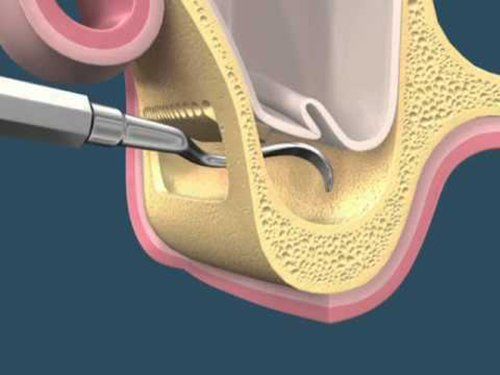
¿Qué Es? El levantamiento de seno maxilar es una cirugía que agrega hueso a tu maxilar superior en el área de tus molares y premolares. El hueso es agregado entre tu maxilar y tus senos maxilares, los cuales se encuentran a cada lado de tu nariz. A modo de hacer espacio para el hueso, la membrana sinusal necesita ser levantada. ¿Para Qué Se Usa? Un levantamiento de seno se realiza cuando no hay suficiente altura en el hueso del maxilar, o cuando los senos están demasiado próximos al maxilar, y los implantes dentales no se pueden colocar por tal motivo. Hay varias posibles razones para que esto suceda: · Muchas personas que han perdido los dientes de su maxilar superior — particularmente los dientes posteriores o molares — no tienen suficiente hueso para que los implantes dentales sean colocados. Una vez se pierde un diente, el hueso en esa área comienza a ser reabsorbido. Si los dientes han estado ausentes por un largo tiempo, con frecuencia no hay suficiente hueso restante para colocar implantes. · Se pudo haber perdido hueso debido a alguna enfermedad periodontal (de las encías). · El seno maxilar puede estar demasiado próximo al maxilar superior. La forma y tamaño del seno varía de persona a persona. El seno también puede agrandarse a medida envejeces. ¿Cómo Se Hace? Tu cirujano hará una incisión y levantará la encía donde tus dientes posteriores solían estar, exponiendo el hueso. Se hace un pequeño agujero ovalado en el hueso. La membrana que reviste el seno en el lado opuesto al agujero separa tu seno de tu maxilar. Esta membrana se empuja suavemente hacia arriba y lejos de tu maxilar. Material de injerto óseo es insertado en el espacio donde el seno solía estar. Una vez el hueso está en su lugar, el tejido es suturado. Lo Que Sigue Después del procedimiento, podrías tener algo de inflamación en el área y podrías sangrar por tu boca o nariz. No te suenes la nariz o estornudes con fuerza. Hacer eso podría causar que el material de injerto óseo se mueva y que los puntos de sutura se aflojen. Puede ser que tu dentista te prescriba medicina para prevenir el congestionamiento y la inflamación. También necesitarás medicina para el dolor, un antibiótico y enjuague bucal antimicrobiano para prevenir una infección. La mayoría de los pacientes solamente experimentarán un poco de incomodidad luego de un procedimiento de levantamiento de seno. Verás al especialista luego de algunos días. Él/ella evaluará el sitio de la cirugía y retirará los puntos de sutura si fuese necesario. Podrías tener que visitar al especialista un par de veces más para que se asegure de que el área está sanando apropiadamente. Tus implantes se colocarán entre cuatro y nueve meses después del levantamiento de seno, dependiendo de la cantidad de hueso requerida. Esto permite que haya tiempo para que el material de injerto óseo se una a tu hueso.
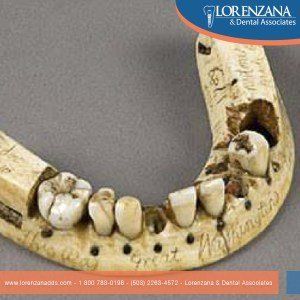
Hoy en día la prótesis dental nos permite reemplazar los dientes perdidos con un aspecto muy estético y natural, devolviendo a la boca la función perdida; pero eso no fue siempre así. Las primeras prótesis dentales de las que tenemos constancia provienen de los etruscos del siglo VIII a. C. y se conserva en el Museo de la Facultad de Odontología de París. Los etruscos utilizaron dientes de animales para reemplazar las piezas faltantes ensambladas sobre bandas de oro, lo cual muestra habilidades muy altas por parte de ellos. Creemos que los fenicios ya usaron oro blando y alambre de oro para la construcción de prótesis dentales. También utilizaron soldaduras y modelos de impresiones. Hacia 754 aC , los etruscos, hábiles artesanos de la época, producían pónticos muy complejos. Empleaban bandas de oro soldadas cada una por pónticos hechos con diferentes piezas dentales de humanos o animales.
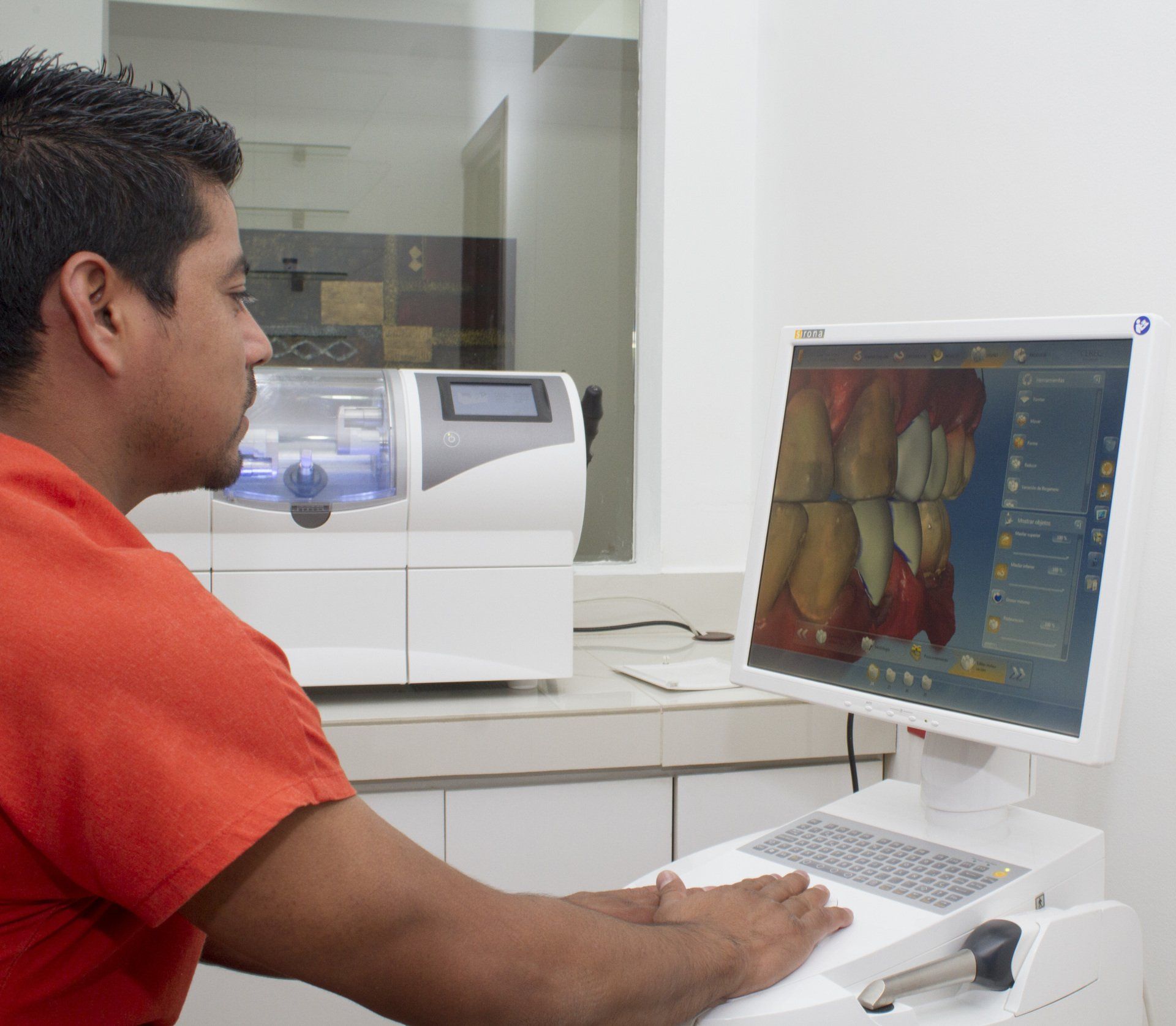
At Lorenzana & Dental Associates, we love our CEREC system - and our patients love it, too! Thanks to CEREC, we can give people the convenience of getting their teeth fixed (e.g. crowns, veneers) in as little as a single visit to our clinic. That is just impressive, right? But how did such an incredible technology as CEREC come into existence? Well, we will talk a little about that in this blog, which is the first in a series of blogs about this system. Let's get to it!

Temporomandibular joint disorders are conditions that cause discomfort and inhibit the proper functioning of the jaw joint and muscles that control jaw movement. Causes In most cases, the cause of TMJ disorders is not evident. However, here is a list of potential causes: External trauma, such as a hard hit to the head or jaw. Tooth grinding or jaw clenching. Poor alignment between top and bottom teeth. Excessive chewing (e.g. gum or fingernails). Overextending the TMJ while eating large things. Degenerative diseases. Symptoms There are various symptoms that could be related to TMJ disorders. Examples of these are the following: Pain in facial, jaw, neck or back muscles. Swelling. Muscle stiffness or limited movement of the jaw. Clicking, popping or grating sounds accompanied by pain when moving the jaw. Teeth not fitting comfortably together. Jaw not opening uniformly or locking. Headache or earache. Difficulty swallowing. Diagnosis There is not always a straightforward way of diagnosing TMJ disorders. Exact causes and symptoms are not clear, and that means the discomfort someone is experimenting could be due to different health issues. Your doctor will take your symptoms and medical history into consideration and then will examine areas of discomfort, including the head, neck, face, and jaw. The doctor might also use x-rays in the analysis of your case. Treatment Reversible Treatments Conservative treatments do not invade the tissues of the face, jaw, or joint, or involve surgery. Reversible treatments do not cause permanent changes in the structure or position of the jaw or teeth. It is advisable that you try these first, before considering more expensive and permanent ones. Muscle and ligament tightness can be helped with jaw stretching and relaxing exercises as advised by your doctor. If the jaw becomes locked, it may be necessary to manipulate the joint back into place under a general anaesthetic. The most common TMJ issues are temporary and do not get worse. Short-term use of pain relievers, such as ibuprofen, may be sufficient. A stabilization splint or a bite guard may provide relief. Stabilization splints should only be used for a short time and should not cause permanent changes in bite. Permanent Treatments There is often debate around the use of permanent methods to treat TMJ disorders. There are no long term studies that show the efficacy of these methods, plus they are extensive and often more expensive than reversible treatments. The bite may be adjusted by polishing teeth, using reconstructive dentistry, or fitting braces. A repositioning splint may be fitted, which over time will permanently change the position of the jaw, ligaments and muscles. There may be an effect on teeth alignment, so more dental work may be needed to adjust the teeth. There is even the option to replace the jaw joint with artificial implants, but it should be considered a last resort. Self-Care In many cases, self-care measures can help alleviate the symptoms of TMJ disorders: Eating soft foods. Applying cold or warm compresses. Avoiding excessive jaw movements (shouting, gum-chewing, and wide yawning, for instance). Practicing gentle jaw stretching and relaxing exercises. Resting the jaw as much as possible. SOURCES: National Institute of Dental and Craniofacial Research Health Navigator



